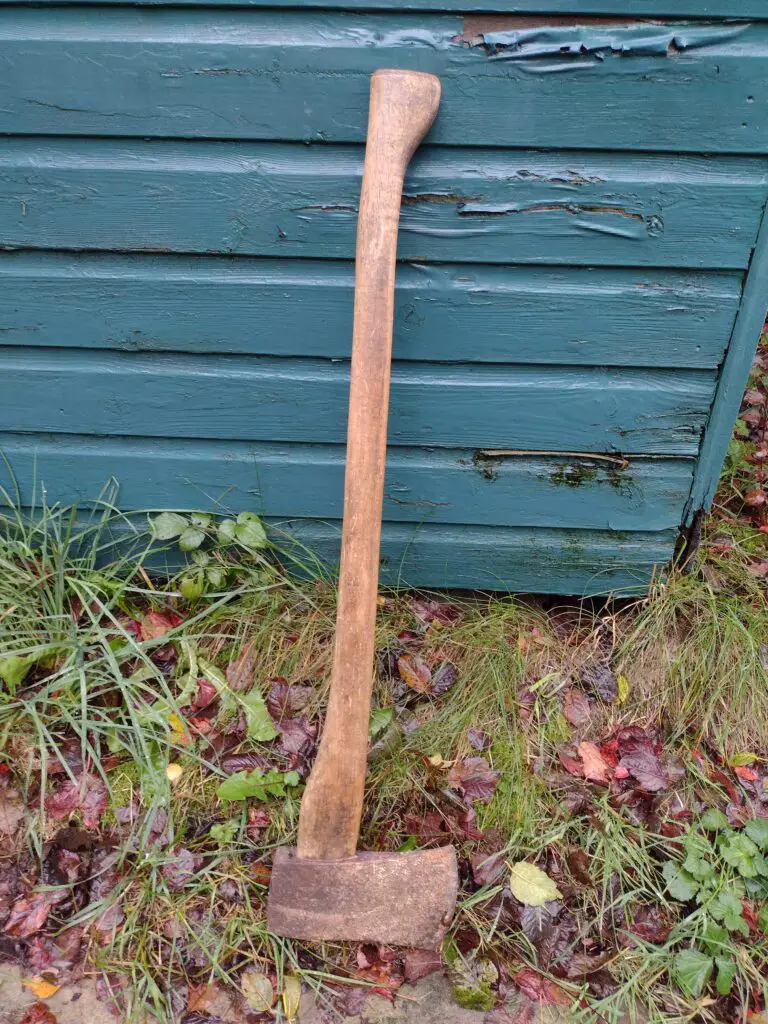I had a small hatchet at my disposal. Even though it was fairly new, I didn’t think that this would be a good option as it had such a short handle. It might have worked fine for a smaller job but not on this occasion.
Unfortunately, I don’t own an electrical circular saw or chainsaw (which obviously would have made this task a whole lot easier). Instead, I was forced to rely on elbow grease and borrowed an old axe from my brother.

Inability to sharpen
The axe itself wasn’t in great condition as the head had severely rusted and the blade wasn’t as sharp as I would have liked.
Worst of all, I didn’t have any tools at hand that I could use to sharpen it with. In the end, I had to make do and persevere anyway.
Gloves & Boots
I have chopped wood before so I had learned from my prior mistakes in this arena. I also knew how easy it was to develop blisters on your hands after you have been working for a while. For this reason, I decided to fish out a pair of gloves from my shed.
In addition, I wore a pair of boots as I wanted to be steady on my feet for obvious safety reasons. Heavy boots would also offer me a bit of extra protection in case I accidentally swung the axe into my foot.
Making life easier for myself
I decided to use two or three large flat logs as a platform to rest each subsequent log on. This would mean that I wouldn’t have to keep bending over so much potentially risking a back injury.
As I began swinging the axe, I raised it over my head and slid my hand down the handle as it hit the wood. This technique made things much simpler. It allowed gravity and momentum to do most of the work without too much physical exertion on my part.
Most of the timber was fairly easy to chop up and came apart in one or two good swings. Although, the most stubborn logs seem to be the ones where branches had stemmed off at right angles.
This meant that the joints and grain of the wood jutted out awkwardly and not in a straight line like most of the other easier logs. These pieces took several swings to break apart but I got there eventually.
Do you know of any effective tips or techniques for chopping up wood that could have helped me more? What would you typically wear when doing this sort of job?
Related Posts:
Chopping Wood Part 3 – Injuries, Exercise & Storing Timber
